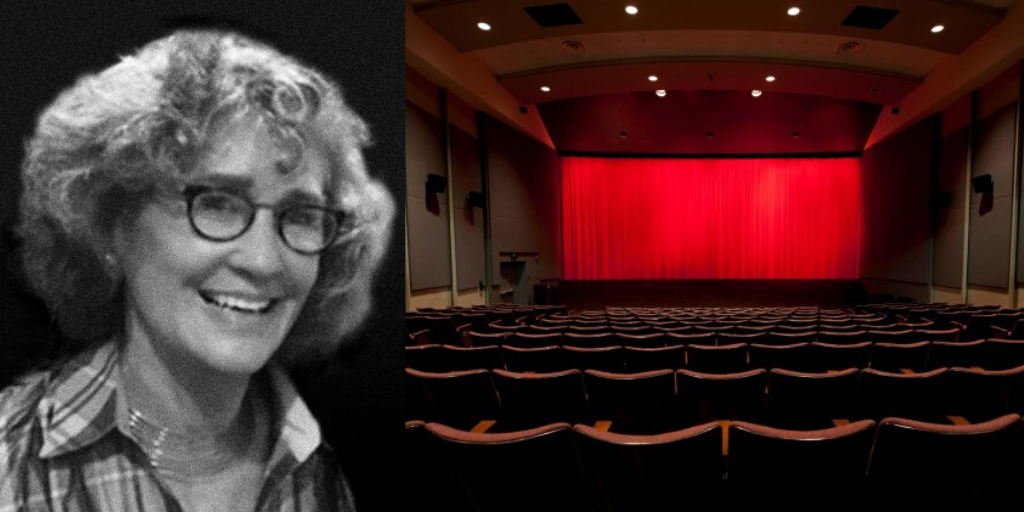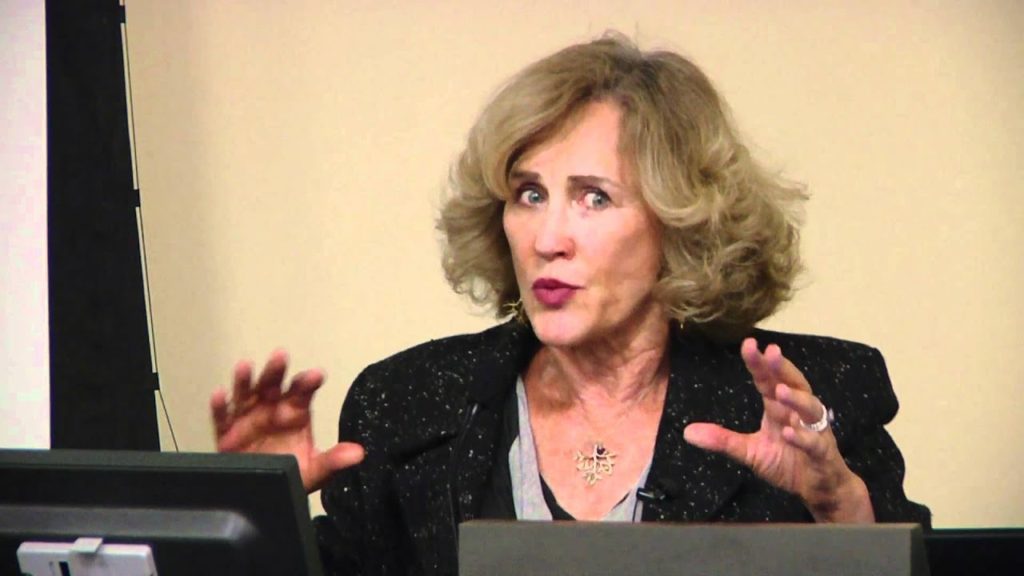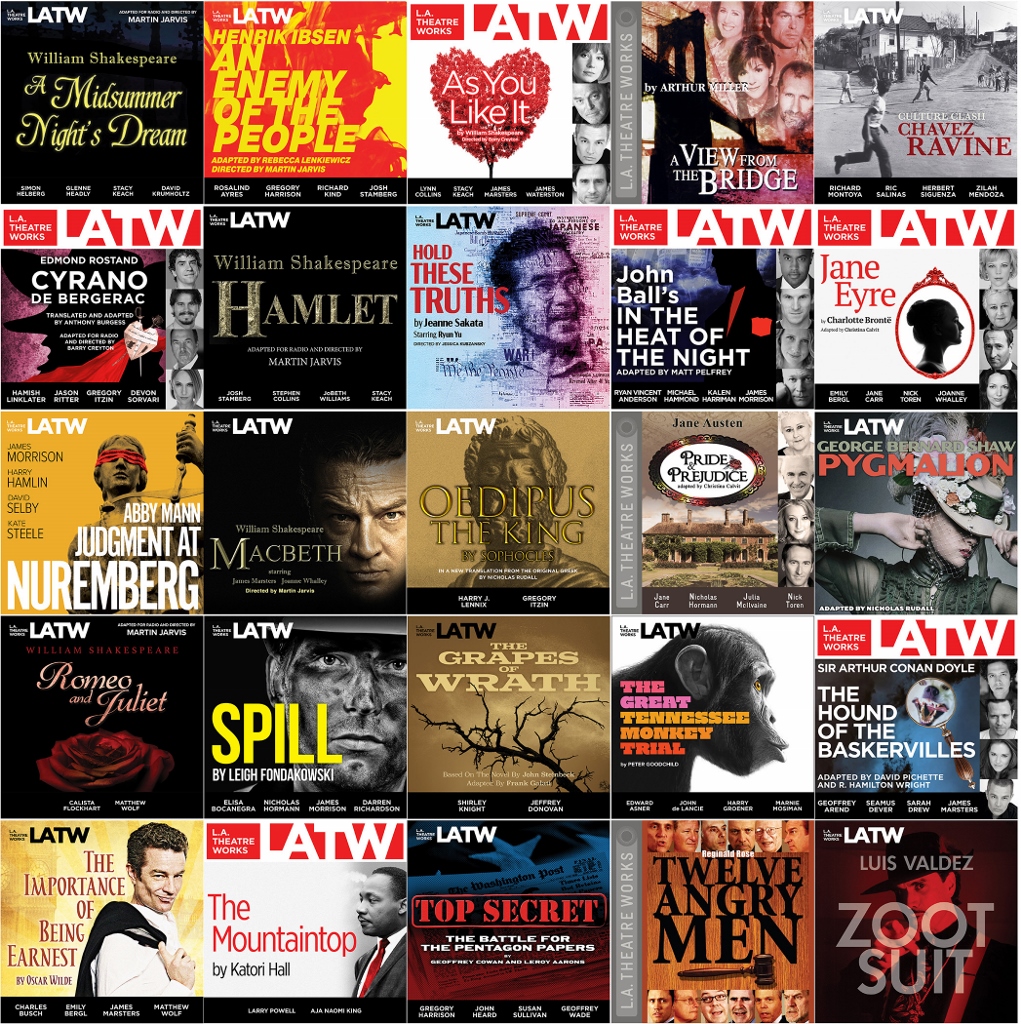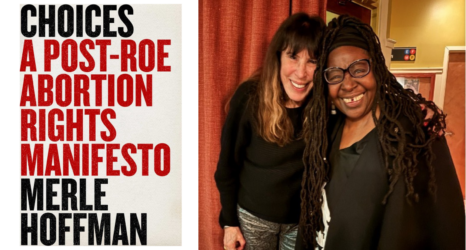
In the midst of fighting a global pandemic, the entertainment and arts industries have come to a standstill. Theater, a traditionally live experience, is especially facing challenges.
But lifelong feminist and theater producer Susan Loewenberg of L.A. Theatre Works finds her organization in a unique position. The company produces audio productions of famous plays with household-named entertainment figures.
Even without live experiences, students, podcast-listeners and the general public can continue to consume theater during quarantine—without having to pay for a ticket—through L.A. Theatre Works’s content.
Loewenberg sat down with Ms. digital editor, Roxy Szal, (through the wonders of technology) to talk about the origin of L.A. Theatre Works and feminism in media and the arts.
Roxy Szal: Can you briefly run through your professional career? How did you get to where you are today?
Susan Loewenberg: I was a professional actress from the time I was 12. My father’s best friend was a major television director, and he started my career. I worked as an actress until my late twenties. Then, I decided I was done. I decided to pursue my other grand passion.
I was going to become a professor of history. I had gone to Sarah Lawrence College as an undergrad. One of my favorite professors had transferred to UCLA, and I contacted him and said, “I want to go to graduate school.” He replied, “Well, I want you to take two courses in extension, and if you still want to go, call me and I’ll get you in.” I did, and got in.
In the middle of my graduate school experience, I was at a party with some showbiz folk—including Bobby Greenwald, who had just been brought out to the Mark Taper Forum by Gordon Davidson to run the John Anson Ford Theatre. He was very involved in all kinds of social action and had been doing theater workshops in New York City jails. We started chatting, and he said it’d be great to do some workshops in prisons with theater people.
And I said, “Oh, that sounds interesting. I would love to do that.” I think I probably had too much to drink!
Next thing I knew, I was six months pregnant, and in the county jail teaching theater to inmates.
A group of theater artists who were connected to the Mark Taper [Forum] at that time, a production designer named Barbara Ling, who’s now become a major film production designer; Julie Weiss, now a prominent film costume designer; playwright Dorie Baizley; and a couple of would-be young directors began working together.
We started doing workshops at the county jail, then we went to the California Institution for Women, then to Terminal Island Federal Prison through a series of circumstances, and all of a sudden we had an organization- we called ourselves Artists In Prison.. I volunteered to run it—I don’t know why—and found myself up in Sacramento with the California Arts Council asking for grants. I had no idea what a grant was. Miraculously, I got us about $3,000; and off we went!
Here I am, 40 years later, still running the same nonprofit. Over the years, we evolved from Artists in Prison, an organization focused on doing theater with inmates, to an organization doing plays with people in the community, then to a professional theater organization, changing our name to L.A. Theatre Works.
We became one of the leading theaters in Los Angeles. We did a number of shows which we took to New York and won lots of awards.
One day a group of well known actors contacted us and said, “We want to form a professional theater company. We’re all famous because of film and television, but we want to work in the theater as well while we’re here.”
There were 34 actors including John Lithgow, Richard Dreyfuss, Ed Asner, Marsha Mason, JoBeth Williams, the late Julie Harris, Hector Elizondo, Helen Hunt—it was quite a group.
I resisted at first. I thought, “No, these actors aren’t serious.” I just dismissed it as a vanity thing.
But they persisted and finally I challenged them, “Okay, well, if you want to each kick in $6,000, I’ll consider it.” I thought that would be the end of it. Of course, they all kicked in the $6,000, and we formed the L.A. Theatre Works Theatre Company.
The idea was, to build a theater and produce plays they would all act in. For a number of reasons, it just didn’t happen. We did a big gala. We did all kinds of wonderful things—but it just wasn’t happening, that kind of fundraising.
And one day, Richard Dreyfuss, said, “You know, I’ve always wanted to work on the radio.”
And I said, “Well, interesting. I do know the person that runs KCRW, her name is Ruth Seymour. I’ll get in touch with her.”
I called her, and she thought it was a fabulous idea. The Abbey Theatre in Dublin had just recorded Ulysses which inspired us to record a major American novel.
I said to the group, “Okay, let’s tackle it.” Ruth [Seymour] said, “Let’s do it. We’ll do it at KCRW.”
We decided to do Sinclair Lewis’s Babbitt. Ed Asner—the perfect Babbitt.
My one caveat was that all 34 actors had to be in it. It took us a year and a half. We recorded it piecemeal in the studios, at KCRW. It was the book, word for word. Fourteen and a half hours. Every actor was assigned a character, and several minor characters.
Ed [Asner] only played Babbitt; where there was narration, the actors would divvy it up. It took us a year and a half. We hired a wonderful editor who edited it, and Ruth [Seymour] debuted it on Thanksgiving Day as a 14-and-a-half-hour marathon on KCRW in 1985—and it went through the roof.
NPR contacted us. They wanted to air it in three-hour segments nationally.
The BBC heard about it and said, “This is fabulous. We would like to propose sending two of our best producer-directors to Los Angeles. We’ll pay for everything, and we would like you to record The Crucible by Arthur Miller and Eric Bentley’s Are You Now or Have You Ever Been“—a docu-drama about the same subject, the [Joseph] McCarthy House Un-American Activities Committee.
So, we said yes; they came over. All our actors participated, and we did two sensational recordings. The Crucible remains today by far our biggest seller—and over 500 plays later, here we are.
Of the group, a number have passed away since then; the great Julie Harris, for example. But, a large majority of the group still work with us in addition to over 3,000 other artists who have lent their marvelous voices to our recording enterprise. .
The organization kept evolving. After Babbitt, we decided we wanted to record plays in front of an audience. Ed Asner kept insisting that I should talk to the marketing manager at a new hotel called the Guest Quarters Suites in Santa Monica, and I kept resisting him, thinking it was a nutty idea.
But I finally met with the manager. They didn’t have much business. They were looking for something. 10 years later, from 1989 to 1999 we recorded 10 plays annually in their packed ballroom, 400 people at each performance, standing in line to get a good seat. It was a great relationship, and it put us and the hotel on the map.
Today we still record with an audience at UCLA; the seating is now reserved, there are more sophisticated mechanisms in place, but the spirit remains intact and the talent artists remain steadfast.
Now we do seven plays a year in front of the audience. Each recording is done four times in front of four different audiences, and we also record plays in the studio. Altogether we record 12-15 plays a year, between the studio and our live performance recordings.
Every year we take a play from our catalog, and we tour it around the United States, playing 30 to 40 cities. They don’t use scripts like they do in Los Angeles—where our major objective is to make a great recording.
When we tour, the company has rehearsed for three or four weeks. We use microphones; but we have costumes, projections and lighting, and we make the show a very theatrical experience.

RS: I imagine the radio aspect of your business is coronavirus-proof! Are you still recording and producing since the shutdown? Which parts are being affected the most by the pandemic?
SL: This year, like everybody else, we’ve had setbacks. We were on tour in Minnesota. We had 11 more performances in various cities, and of course the whole tour was canceled—so I had to bring company home in the middle of March.
That was very sad because it was a great show. I had just flown to Palm Springs, [Florida,] on March 6 to see them give a gorgeous performance. We were at the Kravitz Center in Palm Beach with Seven—a fabulous play about seven real women from seven different countries who did something extraordinary for women and human rights. It was absolutely sensational. But you know, we’ve got this wonderful recording. So, it lives on—c’est la vie.
But the good news about L.A. Theatre Works is we are very lucky. We’re not a conventional theater organization at all. We’re really a theater and media organization. What we do, lends itself to this kind of situation. Our two hour radio show broadcasts weekly. We podcast; we stream our radio show, and we sell and give away our audio recordings all over the world. Our listenership is way, way up. We have many free listening opportunities for the public.
We knew when schools closed, there would be a problem. So, the first thing we did was to select 25 plays relevant to high school and junior high school curriculums. We sent out a press release to educational institutions and the media saying that we were offering teachers 25 recordings relevant to the school curriculum and study guides—and hundreds of teachers have signed up, with more signing up everyday.
Additionally, we have a group of thirty science themed plays funded by the Albert P. Sloan Foundation ; they are available free to the public.
One of the things that we’re doing, on the podcast, is to offer our plays that were too racy or too full of explicit language to be broadcast. We can’t broadcast brilliant works, like David Mamet’s Glengarry Glen Ross or American Buffalo or the irreverent, hilarious Broadway sensation The Motherfucker With The Hat with Chris Rock, Bobby Cannavale and the entire Broadway cast.
In addition, we are giving two recordings to nonprofit organizations, whose themes reflect the missions of these organizations. Their constituencies can stream the plays on their websites. That’s it. So easy. Costs us nothing. It’s a great public service. It’s a great thing for us to do.

RS: What is your feminist origin story? Have you experienced pushback being a woman producer?
SL: I think I’ve always been a feminist. Growing up, we were three girls, and my dad owned a very stylish, fashionable, fabulous woman’s department store. We were surrounded by women. My mother worked—she worked with my dad.
As a young actress, you know, I was a fairly attractive. I remember being on Hogan’s Heroes, and feeling uncomfortable with some of the behavior on that show. But, I was just very tough about stuff like that.
My boyfriend at the time was Charles Grodin, a wonderful man. He once said to me: “Don’t ever appear available.” And, it was the best advice anybody ever gave me. I took that to heart.
At that time, as a young actress, you wanted everybody to like you. Men would get the wrong signals..
But, I have to tell you, I did not have a lot of trouble. Yes, there’s always a creep—but relatively speaking. I have never experienced any of the things that some other women have. Anything that came my way, I could handle, and it was really [Charles Grodin] whose advice stood me in good stead.
It’s an attitude. In the sixties and seventies and most women just wanted to be accommodating. The predators, are very clever about sizing women up. They know who’s vulnerable and who isn’t.
I remember times when it was really hard to walk down the street. Men would whistle and say things. You just had to look straight ahead, give them the withering glance and move on.
But there’s always going to be a jerk. I remember—he shall remain nameless, but a very famous actor—chased me around the grocery store one day. But I outran him; he lost me in the canned goods aisle!
Being in show business, I can’t honestly say I felt discriminated against as a woman producer—except at a couple of the talent agencies that I’ve done business with. They would try to pressure me or give in on points and try to play hardball with me.
But there was definitely an undertone of sexism—no question about it.
RS: How can we get more or better representation of women, both on screen and behind the camera?
SL: We’re making enormous strides since Wendy Wasserstein first began writing plays.
Certainly in the theater, the presence of women and minority women has been terrific. Look at the success of people like Katori Hall, Lynn Nottage, Lydia [R.] Diamond, Suzan-Lori Parks, Pearl Cleage, Jeanne Sakata and Charlayne Woodard among others.
Next season I am recording The Thanksgiving Play by Larissa FastHorse. I’m very impressed by the work. There are just so many talented women writers who are coming into their own.
I’ve always felt very fortunate to be working in the theater and not movies and television—because theater is less infected with that kind of blatant sexism.
Obviously in film and television, horror stories abound. But, we’re making strides. Look at all the women producers we have now at least in television—but not so much in film. I think in film, we’re still vastly underrepresented.
When the regional theater movement started, the Ford Foundation funded a group of theater companies all over the United States that later became the major theater in their respective cities.
At that time, in the late sixties, early seventies, virtually all of the artistic directors were men. Only Zelda Fichandler, was running a major regional theater at that time.
Now that has changed. Today, we have Molly Smith at the helm at Arena Stage, Susan Booth at Alliance in Atlanta, Emily Mann at McCarter in Princeton to name but a few.
But, in plays, you need women, and you need men, right?
The coronavirus pandemic and the response by federal, state and local authorities is fast-moving. During this time, Ms. is keeping a focus on aspects of the crisis—especially as it impacts women and their families—often not reported by mainstream media. If you found this article helpful, please consider supporting our independent reporting and truth-telling for as little as $5 per month.





